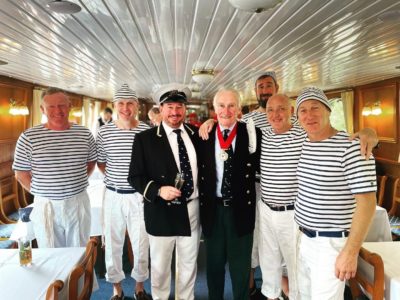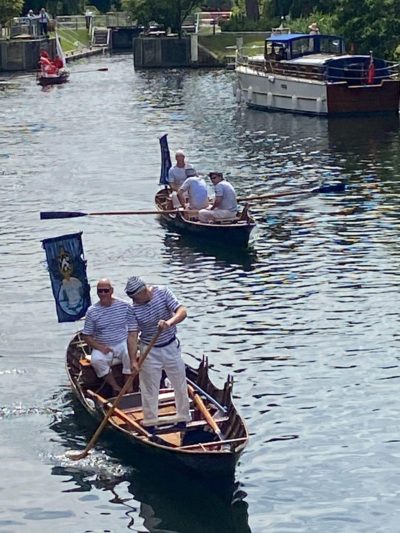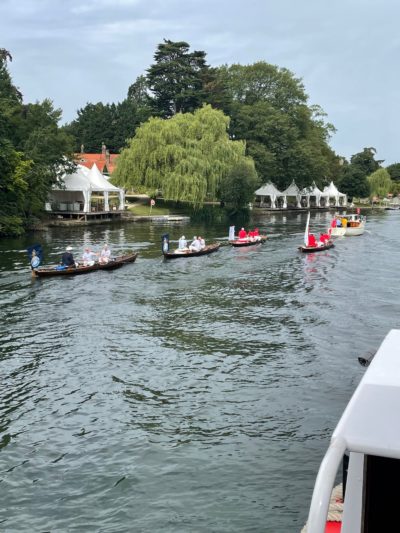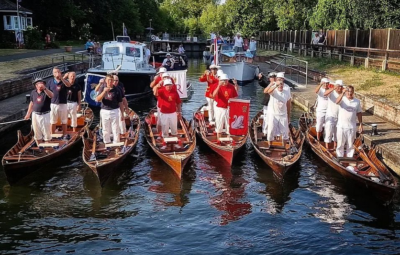The Company
The Mute Swan has been a Royal bird since around 1189. In 1483 an Act of Parliament was passed which enacted that only the monarch could grant possession of Swans, and thus a Swan Mark.
The Dyers’ Company, together with the Vintners’ Company, has possessed a Royalty of a Game of Swans on the River Thames for many centuries. Neither Company has an exact record of the original grant, but it is thought that the great benefactor – Sir Robert Tyrwhitt – may have been instrumental in obtaining such a grant, as he was at one time the Keeper of the Monarch’s Game.
Certainly since Tudor Times the Dyers’ Company has, in conjunction with the Monarch and the Vintners Company, supervised the wellbeing of the swans on the Thames.
The annual Swan Upping Voyage occurs in the third week of July and is undertaken by the three parties concerned to count and mark the swans and cygnets. The traditional marks were two nicks on the beak for the Vintners and one nick for the Dyers’; Royal birds were (and still are) unmarked. It was also customary to pinion the cygnets so they would not stray to other waters, but both pinioning and marking the beaks ceased in the early 20th century; the birds are now ringed and their numbers recorded for future reference.
Swan Upping covers the non-tidal stretch of the river between Sunbury to Abingdon (although in earlier times it began at London Bridge). There are three teams, each of two boats and six men. The King’s men wear red and are commanded by the HM Swan Marker, the Vintners wear white and are commanded by their Swan Marker and the Dyers’ wear blue and are commanded by the Barge Master; each boat flies the King’s standard or a Company flag accordingly. All the Uppers are Thames Watermen and many are sons and grandsons of former Swan Uppers.
Swans mate for life. They nest in spring and produce a clutch of four or five eggs but not all of these will result in healthy adults – swans are subject to many hazards: boats, plastic bags, discarded fishing tackle, overhead power cables, and attacks by dogs and even humans. During Swan Upping, the birds and their young are checked for injuries and their numbers recorded. The Uppers are accompanied by the King’s Swan Warden and representatives from the Swan Sanctuary, who are ready to tend any wounded or unhealthy birds.
As a result of the dramatic decline in numbers during the 1970’s, the late Queen Elizabeth II and the two Companies commissioned an investigation which revealed the birds were suffering from lead poisoning caused by swallowing discarded lead fishing weights. A subsequent ban on the use of lead weights has seen numbers slowly return to higher figures.
The Dyers’ Company gives annual grants to four wildfowl charities – the Swan Sanctuary, Swan Lifeline, Berwick Swan and Wildlife Trust and Swan Support to assist with the care of our swans.



